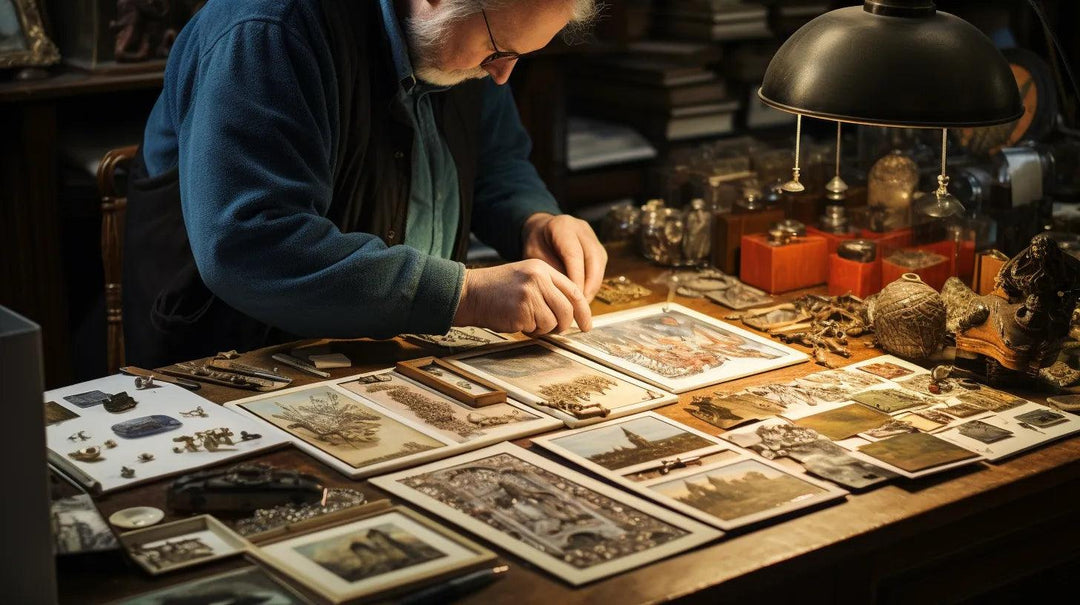Mastering the Art of Identifying Antique Marks and Signatures
Navigating the intricate world of antiques can be a thrilling yet challenging journey, especially when it comes to authenticating and valuing pieces. For collectors, understanding antique marks and signatures is not just about verifying authenticity; it's about connecting with history and ensuring the integrity of their collection. Our guide offers an in-depth look into the art of decoding these marks, providing you with the knowledge needed to make informed decisions and appreciate the true value of your collectibles.
1. The Importance of Marks and Signatures: Antique marks and signatures are like historical fingerprints, offering vital clues about the origin, age, and authenticity of a piece. They can significantly influence an item's value, making them essential for collectors to understand. A well-identified mark or signature can transform an ordinary item into a valuable collectible.
2. Types of Marks: Antiques often bear various marks, including maker's marks, hallmarks, date letters, and registration marks. Each type of mark serves a specific purpose, from identifying the craftsman to indicating the production year. Recognizing these distinctions is crucial for accurate evaluation.
3. Deciphering Signatures: Signatures on antiques, especially on artworks, can be a complex task. A signature can indicate not just the creator but also the period and style of the piece. Sometimes, signatures are forged to enhance value, making expert verification essential.
4. Regional Variations: Marks and signatures can vary significantly based on their region of origin. For instance, European porcelain marks differ from Asian ones, and each carries its unique set of characteristics and history. Understanding these regional differences is key to proper identification.
5. Tools and Resources: Utilize various tools and resources, such as magnifying glasses, UV lights, and reference books. Online databases and forums can also be invaluable for research and verification. Always cross-reference information for accuracy.
6. Consulting Experts: When in doubt, consulting with experts in the field or getting a professional appraisal can provide peace of mind and ensure the authenticity of your piece. Expert opinions can also shed light on the historical and cultural significance of the marks.
7. Impact on Value: A correctly identified mark or signature can significantly impact an item's value. Collectors often seek pieces with clear, well-preserved marks, as they assure authenticity and often indicate a higher quality of craftsmanship.
Understanding antique marks and signatures is a fundamental aspect of collecting. It not only aids in authenticating and valuing items but also enriches the collector's knowledge and connection to their pieces. By mastering the art of decoding these marks, collectors can confidently build a collection of genuine, valuable antiques.
Frequently Asked Questions
How can beginners start practicing the identification of antique marks and signatures with minimal resources?
Beginners can start by exploring local antique shops, flea markets, and estate sales to get a hands-on experience with antique items. Examining items closely and taking note of the marks and signatures they find can be an invaluable practical exercise. Additionally, beginners can leverage free online resources such as museum collections, educational websites, and social media groups dedicated to antiques and collectibles. Engaging with a community of collectors through forums or social media can also provide insights and guidance from more experienced enthusiasts.
Are there any specific online databases or forums recommended by experts for researching antique marks and signatures?
While the article doesn't specify, numerous online databases and forums are widely respected within the collector community for researching antique marks and signatures. Websites like the International Hallmarks on Silver Collectors Website, the Marks Project for American studio pottery, and the Online Encyclopedia of Silver Marks, Hallmarks, and Makers' Marks are invaluable resources. Additionally, forums such as the Antique Marks Forum or Reddit communities related to antiques can offer personalized advice and insights.
What are the common pitfalls or mistakes to avoid when trying to identify and authenticate antique marks and signatures?
One common pitfall is relying solely on visual recognition without understanding the context or history behind a mark or signature. This can lead to misidentification, especially with marks that have been widely replicated or forged. Another mistake is not consulting multiple sources or experts when uncertain, which can result in inaccurate conclusions about an item's authenticity or value. Lastly, beginners might overlook the importance of condition and provenance, which can significantly impact an item's authenticity and value.











